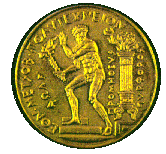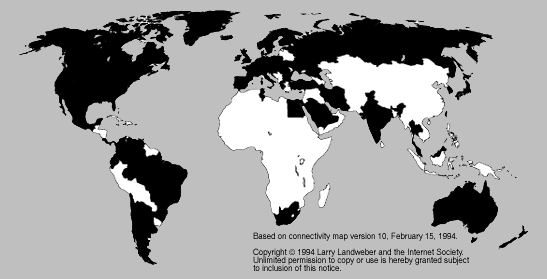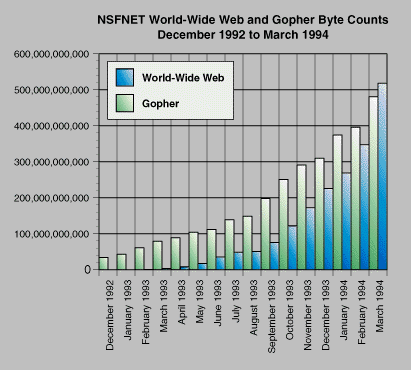Training
System

|
Tele Training System |

|
CONTENTS
Click here to go back.

The countries in black have Internet connectivity.
Nobody "owns" the Internet - although there are companies that help manage different parts of the networks that tie everything together, there is no single governing body that controls what happens on the Internet. The networks within different countries are funded and managed locally according to local policies.
Having access to the Internet usually means that one has access to a number of basic services: electronic mail, interactive conferences, access to information resources, network news, and the ability to transfer files.
The World-Wide Web uses the Internet to transmit hypermedia documents between computer users internationally. Much in the same way, nobody "owns" the World-Wide Web. People are responsible for the documents they author and make available publicly on the Web. Via the Internet, hundreds of thousands of people around the world are making information available from their homes, schools, and workplaces.
It's possible to use World-Wide Web software without having to use the Internet. But Internet access is necessary in order to make full use of and participate in the World-Wide Web.
Click here to return to index.
For fifty years, people have dreamt of the concept of a universal database of knowledge - information that would be accessible to people around the world and link easily to other pieces of information so that any user could quickly find the things most important to themselves. It was in the 1960's when this idea was explored further, giving rise to visions of a "docuverse" that people could swim through, revolutionizing all aspects of human-information interaction. Only now has the technology caught up with these dreams, making it possible to implement them on a global scale.
The World-Wide Web is officially described as a "wide-area hypermedia information retrieval initiative aiming to give universal access to a large universe of documents". What the World-Wide Web (WWW, W3) project has done is provide users on computer networks with a consistent means to access a variety of media in a simplified fashion. Using popular software interfaces to the Web, such as Netscape and Mosaic, the Web project has changed the way people view and create information - it has created the first true global hypermedia network.
The earliest visions of such systems had as their goal the advancement of science and education. Although the World-Wide Web project has the potential to make a significant impact in these areas, it is poised to revolutionize many elements of society, including commerce, politics, and literature.

World-Wide Web growth.
In June 1993, Matthew Gray at MIT ran a small program which automatically travels links within the Web network to try to determine just how many sites there are that offer information over the World-Wide Web. His small "World-Wide Web Wanderer" found around 100 sites that month and over two hundred thousand documents. In March 1994 his robot found over 1,200 unique sites. Even though the robot's programming was improved somewhat, and a number of factors may have affected the final count, the growth rate of the Web from the last half of 1993 throughout the first half of 1994 is amazing and continues to increase.
Based on Web site statistics, estimates of the number of knowledgeable Web users in the world has been as large as two million. However, considering the number of hosts that frequent the most populated areas of the Web, it is safe to say that there are around 250,000 to 500,000 current active Web users today.
Click here to return to index.
Click
here to visit the detailed documentation.
For instance, suppose you were able to somehow select (with a mouse or with your finger) the word "hypertext" in the sentence before this one. In a hypertext system, you would then have one or more documents related to hypertext appear before you - a history of hypertext, for example, or the Webster's definition of hypertext. These new texts would themselves have links and connections to other documents - continually selecting text would take you on a free-associative tour of information. In this way, hypertext links, called hyperlinks, can create a complex virtual web of connections.
Hypermedia is hypertext with a difference - hypermedia documents contain links not only to other pieces of text, but also to other forms of media - sounds, images, and movies. Images themselves can be selected to link to sounds or documents. Hypermedia simply combines hypertext and multimedia. Here are some simple examples of hypermedia:
Click here to return to index.
HTML instructions divide the text of a document into blocks called elements. These can be divided into two broad categories -- those that define how the BODY of the document is to be displayed by the browser, and those that define information `about' the document, such as the title or relationships to other documents.
Here is an Example of Document Structure:
<HTML>
<HEAD>
<TITLE> Environmental Change Project </TITLE>
</HEAD>
<BODY>
<h1> Environmental Change Project </h1>
Welcome to the home page of the Environmental Change Project.
This project is different from other projects with similar
names. In our case we actually wish to change the
climate. For example, we would like hot beaches in Northern
Quebec, and deserts near Chicago.
<p>So how will we do this. Well we do the following
<ul>
<li><A HREF="burn.html">Burn</A> more forests.
<li>Destroy the
<A HREF="http://who.zoo.do/ozone.html">Ozone</A> layer.
<li>Birth more <A HREF="ftp:foo.do.do/cows.gif">cows</a>
</ul>
</BODY>
</HTML>
Click here to return to index.
Click
here to visit the detailed documentation.
Welcome to the great voyage in World Wide Web.
|
Copyright © 1996 United Artists, All rights reserved. Kostalas Ioannis Liakopoulos Athanassios Palpanas Themistoklis |
|